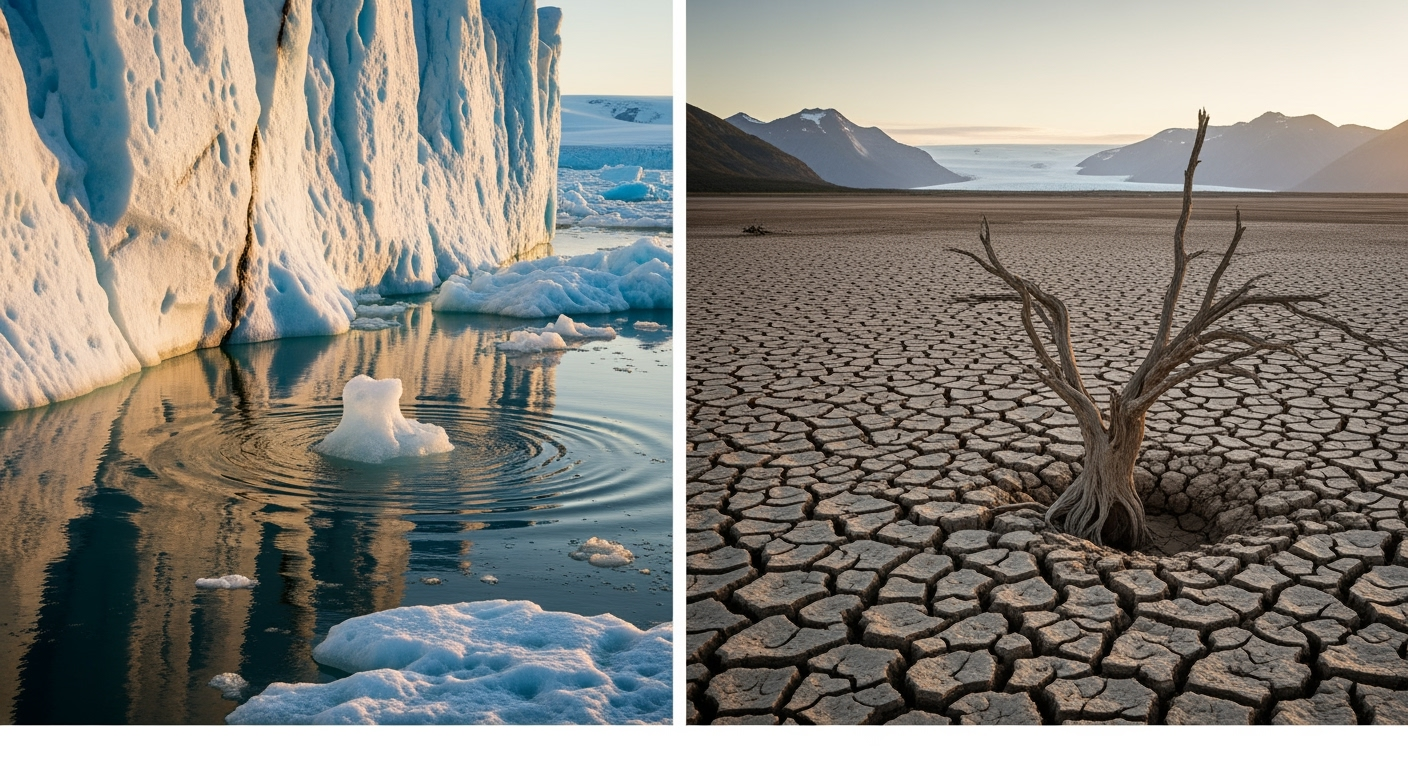Related Articles

The Unseen Costs: Dissecting the Dark Side of Viral Food Trends

Solar's Bold Horizon: Powering Earth and Beyond in a New Energy Era





Global Indicators Signal Urgent Need for Transformative Action
The Earth's climate system is under unprecedented stress, with recent data revealing accelerating warming, record greenhouse gas concentrations, and a discernible escalation in extreme weather events. A comprehensive assessment of planetary health underscores a deepening climate crisis, compelling an urgent and widespread response from global communities and policymakers. The past decade, spanning 2015 to 2024, now stands as the warmest on record, marking a continuous trend of rising temperatures with profound implications for natural and human systems worldwide.
The planet's average temperature has seen a significant increase, with Earth being approximately 1.47 degrees Celsius (2.65 degrees Fahrenheit) warmer in 2024 compared to the late 19th-century pre-industrial average (1850-1900). This warming trend has not been uniform across the globe but has shown an accelerating rate, more than tripling since 1975, reaching 0.20 degrees Celsius (0.36 degrees Fahrenheit) per decade. The Intergovernmental Panel on Climate Change (IPCC) Sixth Assessment Report (AR6) unequivocally attributes this to human activities, primarily the burning of fossil fuels.
Concurrently, atmospheric carbon dioxide (CO2) levels have reached concentrations not seen in at least 800,000 years, establishing new record highs in 2024. The global average atmospheric CO2 was 422.7 parts per million (ppm), with measurements at Mauna Loa Observatory hitting just under 427 ppm in May 2024. This represents a 50 percent increase from pre-Industrial Revolution levels, with the annual rate of increase over the past six decades approximately 100 times faster than natural increases observed after past ice ages. Such a rapid surge in heat-trapping gases acts as a blanket, further warming the planet and disrupting established climatic patterns.
Adding to these concerning indicators, global sea levels are rising at an accelerated pace. In 2024, a NASA-led analysis revealed an unexpected increase, with the sea level rising by 0.23 inches (0.59 centimeters) per year, surpassing the anticipated rate of 0.17 inches (0.43 centimeters) per year. This accelerated rise was largely attributed to the thermal expansion of ocean water, which accounted for two-thirds of the increase, a reversal from previous years where melting ice sheets and glaciers were the primary contributors. Since the satellite record began in 1993, the rate of annual sea level rise has more than doubled, resulting in a total increase of 4 inches (10 centimeters). Projections indicate that this trend will continue, posing significant threats to coastal communities and ecosystems globally.
The impact of a warming planet extends far beyond average temperature increases, manifesting in more frequent and intense extreme weather events across the globe. Climate change is worsening the severity and frequency of phenomena such as heatwaves, prolonged droughts, heavy downpours, hurricanes, and wildfires. Attribution studies increasingly link these extreme events to human-influenced climate change, particularly heat extremes, which are often the most straightforward to connect to a warming world. Record-breaking heat waves were observed on land and in the oceans in 2024, alongside severe floods and years-long droughts. Warmer air holds more moisture, intensifying rainfall, while warmer sea surface temperatures increase storm wind speeds. The economic toll of these events is evident in the increasing number of billion-dollar disasters.
Simultaneously, the Earth's biodiversity faces an existential threat. Climate change is identified as one of the most significant drivers of biodiversity loss, exacerbating the intensity and frequency of environmental disturbances like fires, storms, and droughts. Species are vanishing at a rate estimated to be 10 to 100 times faster than the natural rate over the past 10 million years, with approximately a quarter of animal and plant species facing the risk of extinction. Rising ocean temperatures and acidification further imperil marine ecosystems, making it harder for corals and shellfish to form their essential structures. Disruptions to natural cycles, such as altered migration patterns or flowering times, also threaten species survival as ecosystems struggle to adapt to rapid environmental shifts.
In response to these escalating challenges, global efforts are underway to both mitigate climate change and adapt to its unavoidable impacts. Mitigation focuses on reducing greenhouse gas emissions and enhancing natural carbon sinks. Key strategies include a comprehensive shift away from fossil fuels towards renewable energy sources like solar, wind, and geothermal power. Significant progress has been made in this sector, with global renewable energy capacity growing by a record-breaking 15.1% in 2024, reaching 4,448 gigawatts (GW). This expansion was predominantly driven by solar and wind energy. Investment in renewable energy continued to surge, increasing by 10% in the first half of 2025 to a record $386 billion. Despite this growth, the current rate remains below what is required to triple renewable energy capacity by 2030, a target deemed crucial for meeting global climate goals. Other mitigation efforts involve improving energy efficiency across all sectors, adopting regenerative agricultural practices, and protecting and restoring critical ecosystems such as forests and wetlands, which act as vital carbon sinks.
Parallel to mitigation, adaptation strategies are being implemented to manage the impacts and risks that are already locked in due to past emissions. These efforts vary by region, addressing specific vulnerabilities. Examples include infrastructural solutions like building seawalls and inland flood defenses in coastal and low-lying areas, and developing new insurance schemes. Behavioral and nature-based options are also critical, such as changing crop planting times or varieties to suit new climatic conditions, installing green roofs in urban areas to combat heat, and restoring mangroves to protect coastlines from storm surges. Countries and regions are developing comprehensive strategies; for instance, California and Türkiye have outlined detailed climate adaptation and mitigation plans for 2024-2030, focusing on protecting vulnerable communities, building resilient infrastructure, and leveraging nature-based solutions. These strategies often involve participatory planning, incorporating local knowledge and fostering community involvement.
The scientific consensus, particularly from the IPCC's Sixth Assessment Report, paints a stark picture: human influence on the climate system is undeniable, causing widespread and rapid changes. The report emphasizes that limiting global warming to 1.5°C above pre-industrial levels is still possible but requires immediate, deep, and sustained reductions in greenhouse gas emissions across all sectors. The window for achieving this critical target is rapidly closing.
The health of our planet, and by extension, humanity, hinges on the collective ability to transition swiftly to a low-carbon economy and build resilience against the impacts that are already unfolding. The interconnectedness of rising temperatures, extreme weather, and biodiversity loss necessitates a holistic approach, combining aggressive mitigation with robust adaptation measures. Sustained international cooperation, policy innovation, technological advancement, and individual action are paramount to navigate this complex crisis and forge a more sustainable and resilient future.